Mellita
isometra
Family
Mellitidae
Previous
| Next |
Gallery
Note:
Beam trawls used in the Transect Program do not adequately
collect burrowing organisms,
so the distribution and abundance of this species is not well documented.
Scroll
down to review gallery images.
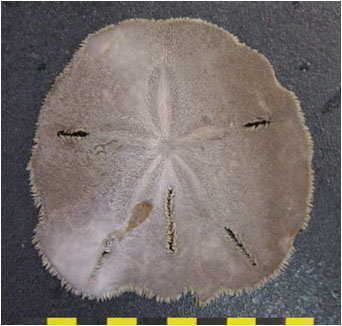
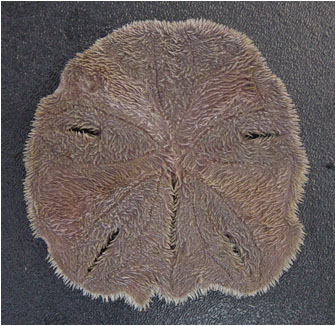
This is a common
irregular sea urchin, often referred to as a "sand dollar" or "key-hole
urchin."
There are five lunules (the slot-like holes), and 5 distinct, elongate petals
on the aboral side.
Note the short spines and tube feet that aid in burrowing. The edges of the
specimen depicted are not
smooth (as would be typical), possibly due to breakage during its growth. Test
width is ~9 cm.
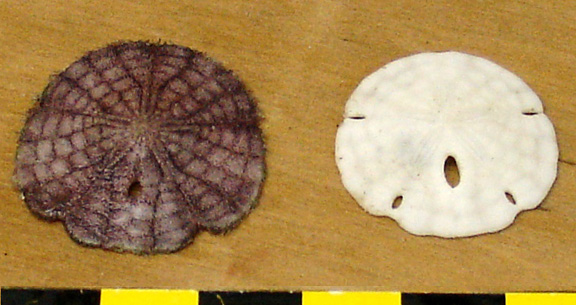
These tiny specimens are only 2 cm long. They may be juveniles of
Mellita isometra (or, possibly Encope aberrans), as they have
5 distinct
slits on the disc. Note the numerous plates that make up the disc.
The individual on the left is living and still retains its
spines,
whereas the other specimen is a skeleton that has been bleached.
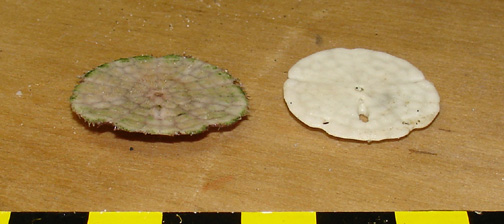
These specimens are extremely thin and delicate. Their ventral side
(top)
is nearly flat, while the dorsal side (below) is slightly arched.
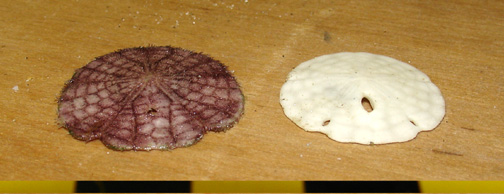
TOP




